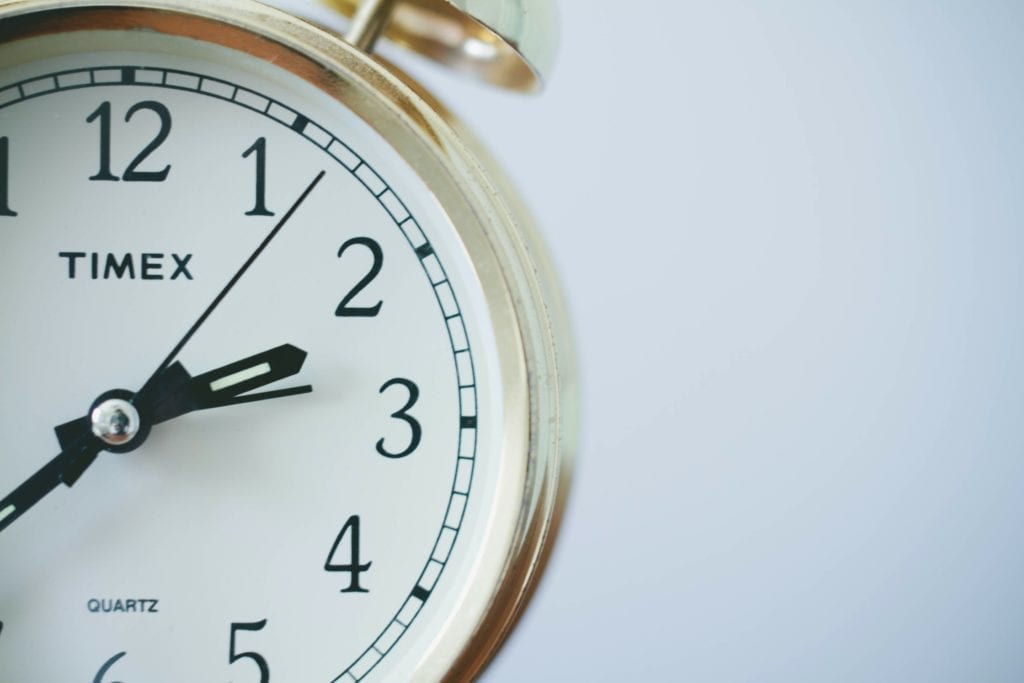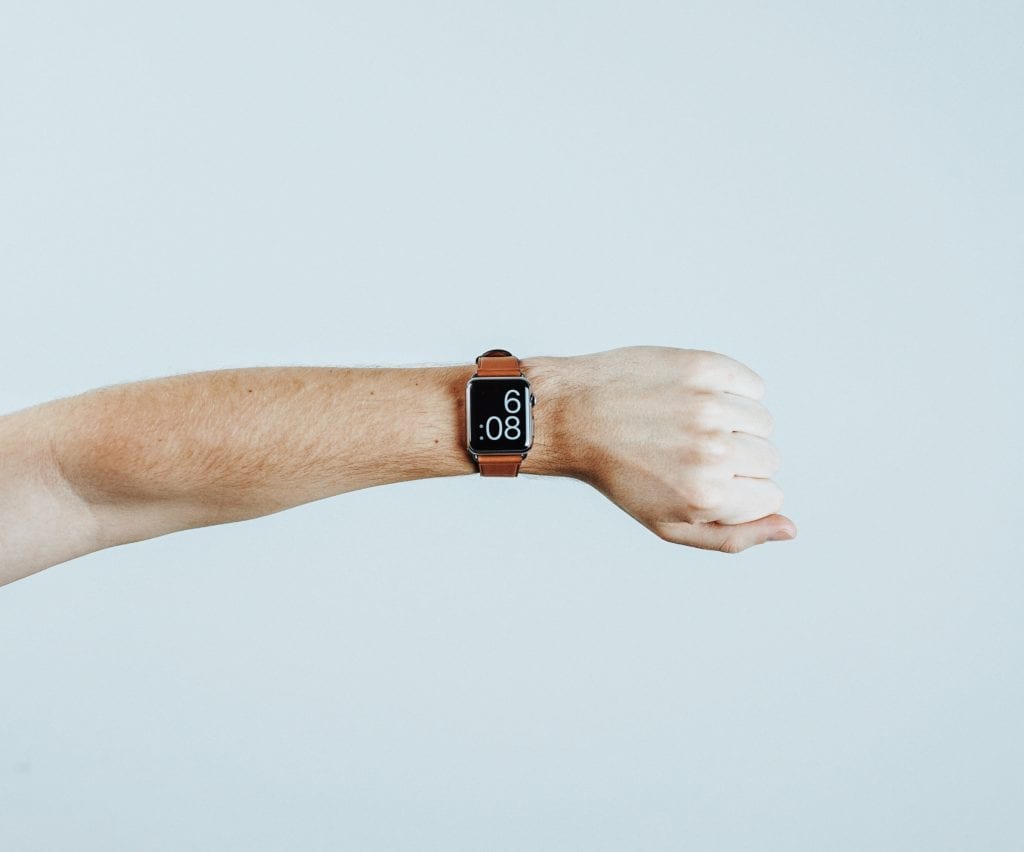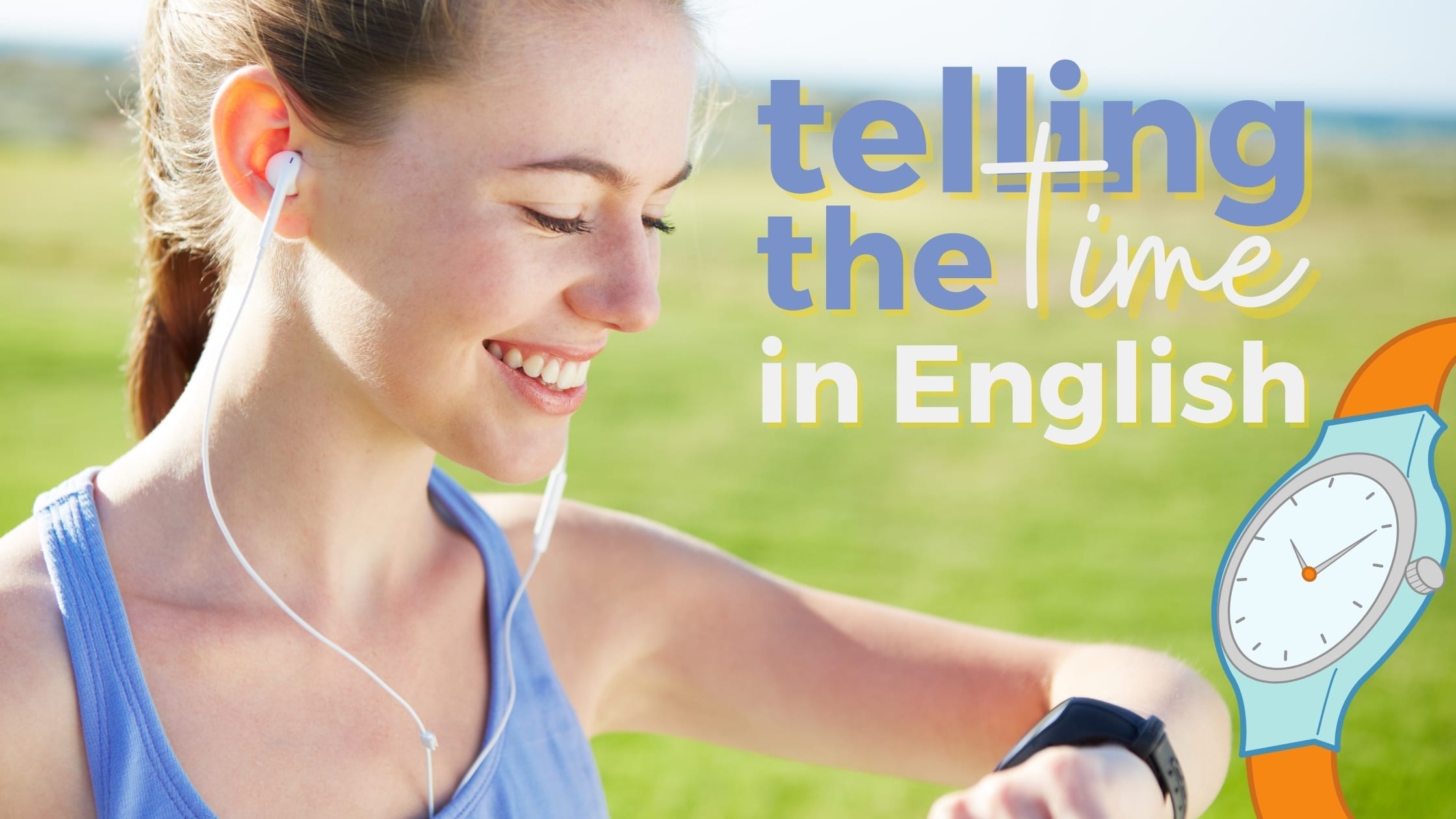Telling the Time in English: Learn the Rules and the Vocabulary
We plan our lives based on the time. We have years, months, days, hours, minutes, seconds… For some people, it is impossible to leave the house without a watch on their wrist. Others tell the time by looking at their phones. No matter what is your preferred way to check what time it is, you can’t deny that talking about time in English is essential if you want to communicate well with others. In this article, we will teach you expressions we use when telling the time in English and other ways to ask “What time is it?” and answer questions about the hours.
Parts of the day
There are 24 hours in a day. From 12 a.m. (midnight) to 11:59 p.m., we have 1440 minutes. The period that goes from 5 a.m. to 12 p.m. (noon) it’s called ‘morning’. If you meet anybody during that period you may greet them with “Good morning”. ‘Early morning’ is the period between 5 a.m. to 10 a.m., and ‘late morning’ would be the period from 10 a.m. to 12 p.m.
Some people may consider different time frames to refer to the parts of the day, according to their routines and activities.

From 12 p.m. (noon) to 5 p.m. we have the ‘afternoon’. You may greet people with “Good afternoon” during that time frame. We call ‘evening’ the period from 5 p.m. to 9 p.m. The ‘night’ usually starts after dinner and goes until the sun rises, which depends on the place you are in, the season of the year, and more. We can consider ‘night’ the period from 9 p.m. to 5 a.m. In terms of greeting, it is common to use “Good evening” when we arrive somewhere and “Good night” when we leave the place.
Asking for the time in English
There are several ways to ask questions about the time. Here are a few options that you can use:
- What time is it?
- What is the time?
- Do you have the time?
- Have you got the time?
- Could you tell me the time? (more formal)
Answering questions about time
If you need to answer any of the questions we learned above, you should say:
- It is….
- It’s…
Take a look at these two dialogues below.
Dialogue 1
— Excuse me. What time is it?
— It’s 2 pm.
— Thank you!
— Sure, no problem!
Dialogue 2
— Excuse me. Could you tell me the time?
— Sure, it is twenty to four.
— Thank you.
— You’re welcome!

Methods of showing time
There are two ways of showing the time. We can use the 12-hour clock, which uses AM and PM, or we can use the 24-hour clock. Most countries use the second option, but people in the United States, for instance, use the 12-hour clock. A.m. and p.m. come from Latin. A.m. means ante meridiem, which means before noon, and p.m. means post meridiem, which means after noon.
Take a look at the table below:
| 12-hour clock | 24-hour clock |
| 12:00 AM | 00:00 |
| 1:00 AM | 01:00 |
| 2:00 AM | 02:00 |
| 3:00 AM | 03:00 |
| 4:00 AM | 04:00 |
| 5:00 AM | 05:00 |
| 6:00 AM | 06:00 |
| 7:00 AM | 07:00 |
| 8:00 AM | 08:00 |
| 9:00 AM | 09:00 |
| 10:00 AM | 10:00 |
| 11:00 AM | 11:00 |
| 12:00 PM | 12:00 |
| 1:00 PM | 13:00 |
| 2:00 PM | 14:00 |
| 3:00 PM | 15:00 |
| 4:00 PM | 16:00 |
| 5:00 PM | 17:00 |
| 6:00 PM | 18:00 |
| 7:00 PM | 19:00 |
| 8:00 PM | 20:00 |
| 9:00 PM | 21:00 |
| 10:00 PM | 22:00 |
| 11:00 PM | 23:00 |
Watch or clock?
Do you wear a watch? Is there a clock in your house?
How about the difference between the words ‘watch’ and ‘clock’? Can you tell me what is the difference between them? Well, the difference here is that we call ‘watch’ the object we use on our wrists to check the time. That’s why Apple calls their product “Apple Watch”. The word ‘clock’ is used to all the other instruments we can use to measure their time. People may have a clock on their bedside table or on the wall in the kitchen, for instance.

Maybe you don’t wear a watch nor you have a clock in your house. Nowadays, people are more used to checking the time on their phones. Is that what you do?
Telling the time in English
We use the word ‘o’clock’ with precise hours. You can say “It’s 10 o’clock in the morning” but you wouldn’t use “o’clock” when telling someone it’s 8:02 in the morning. We use o’clock with the 12-hour clock, so “o’clock” would never follow 13, 14, 15, etc.
Past is used to say how many minutes have passed after a precise hour. You can’t use past for minutes 1 to 30. So, if it’s 2:05 in the afternoon, we can say: It’s five past two. If it’s 2:30 in the afternoon, we have two choices. You can say “It’s thirty past two” or “It’s half past two”.
We use ‘to’ to say how many minutes are left until the next precise hour. We use ‘to’ for minutes 31 to 59. If it’s 5:40 in the afternoon, we can say: It’s twenty to six. That means we have 20 minutes until the next precise hour, which is 6 o’clock.
More words for telling time
When it’s 5:15 or 5:45, we can say “It’s fifteen past five” and “It’s fifteen to six”. However, it is also very common to say “It’s a quarter past five” and “It’s a quarter to six”. A quarter of an hour is equivalent to 15 minutes.
There are two ways of saying “It’s 12 am”. You can say “It’s 12 in the morning” or “It’s midnight”. The same happens to “12 pm”. You may hear “It’s 12 in the afternoon” or “It’s noon”. Some people may also use “It’s midday”.
‘Dawn’ and ‘dusk’ are also common words when we are telling time in English. ‘Dawn’ happens before the sunrise and ‘dusk’ occurs after the sunset. ‘Sunrise’ and ‘sunset’ are the points at which the top edge of the Sun reaches the horizon. Sunrise and sunset times will vary according to the seasons of the year.
Using the preposition ‘at’ with specific times
Remember to use the preposition ‘at’ when telling the time. If somebody asks you “What time does your piano class start?”, you will answer something like this “It usually starts at 4 in the afternoon”.
We also use ‘at’ with night. For instance:
I don’t like studying at night.
If you are talking about your daily schedule, for instance, you may say “I wake up at 6. I have breakfast and I leave for work at 8. I arrive at work at 9:30.”
For more information on talking about your routine, check out this article we posted here on the PrepEng blog.
Now that you have read about asking and telling the time in English, we hope you can answer the question “What time is it?” without hesitation. Before you go, we are curious to know: do you wear a clock or you use your phone to check the time? Let us know in the comment section down below.

